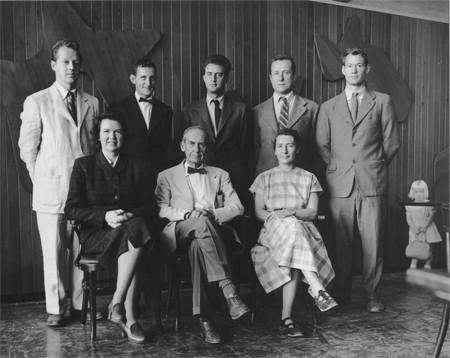The decades after World War II were marked by a broad transformation in the scale and scope of professional architectural practice in the United States. Collaboration became the watchword for a generation of architects committed to challenging the paradigm of the singular genius—the primary model for interpreting the work of the so-called modernist masters—as inadequate to address the large-scale building problems of their time. For adherents to this ethos, a perceived consensus on the principles of the modern movement was accompanied by the belief that such unity might enable newly collective forms of work that would bring the building disciplines together to address the complex tasks of postwar construction.
Within this changing context, I explore the rise and international extension of the body of collaborative and team-based methods of production that came to be described, and criticized, under the broad category of “corporate” architectural practice. The office that perhaps best emblematized this history was The Architects Collaborative (TAC), established in 1945 as an experiment in team-based design methods by seven young practitioners together with Walter Gropius (1883–1969), the German émigré and founder of the Bauhaus. I argue that the architects who formed TAC were joined not by an indebtedness to Gropius, as has commonly been assumed, but rather through a dense network of personal and professional connections and a shared set of social concerns, formed in a climate of cultural and architectural optimism at the start of the postwar building boom. An exploration of TAC and its history reveals a widespread interest in the potential of collective methods to reshape the nature and objects of architectural production as well as the contested questions of anonymity, authorship, and influence at the heart of collaborative architectural practice after 1945.
In reassessing the history of TAC, I pay particular attention to how the firm’s model was received and interpreted by architectural critics, many of whom took TAC’s work as evidence for the decline of the modernist masters (exemplified by Gropius) under the demands of mainstream professional practice in the United States after World War II. I argue that the uneasy status of authorship beyond the firm’s rhetoric of collaboration led critics to conflate TAC’s architecture with the personae of its presumed authors, cementing the firm’s reputation as a producer of buildings whose aesthetics embodied the anonymous, corporate character of their architects.
Perhaps no episode did more to damage the public reputation of the modernist masters in the United States after World War II than the scandal over the Pan American Airways building in New York City. Designed by TAC, Pietro Belluschi, and Emery Roth & Sons for the developer Erwin S. Wolfson, the massive slab of Pan Am was the largest commercial office building in the world upon its completion in 1963. The project was mired in controversy from its origins; many were convinced that no office building of such scale, irrespective of its design, should be built on the site. TAC and Belluschi stepped into this debate, tasked with rescuing the project through changes aimed at modifying the spatial and aesthetic impact of the slab in its urban context. Yet the final design fared no better in the eyes of its many critics. Attacked for both its extreme scale and its perceived banality—“a colossal collection of minimums,” as Ada Louise Huxtable derided it—the building was judged by critics to be guilty of a litany of unpardonable sins, aesthetic as well as urbanistic.
In my dissertation, I revisit the circumstances surrounding Pan Am beyond such critical or negative assessments in order to reveal a set of debates on questions of authorship, ethics, and social responsibility; public versus private development; and the role of the architect in engaging or rejecting the demands of a commission. Crucial in these debates, I argue, was the tendency of critics to search for evidence of authorial signatures that might distinguish the roles of the building’s various architectural protagonists, most significantly Walter Gropius. In this way, debates over Pan Am’s design came to serve as a referendum on the fate of the modernist masters after World War II and a benchmark for critics and the public alike to assess the state of mainstream postwar architectural practice in the United States.
